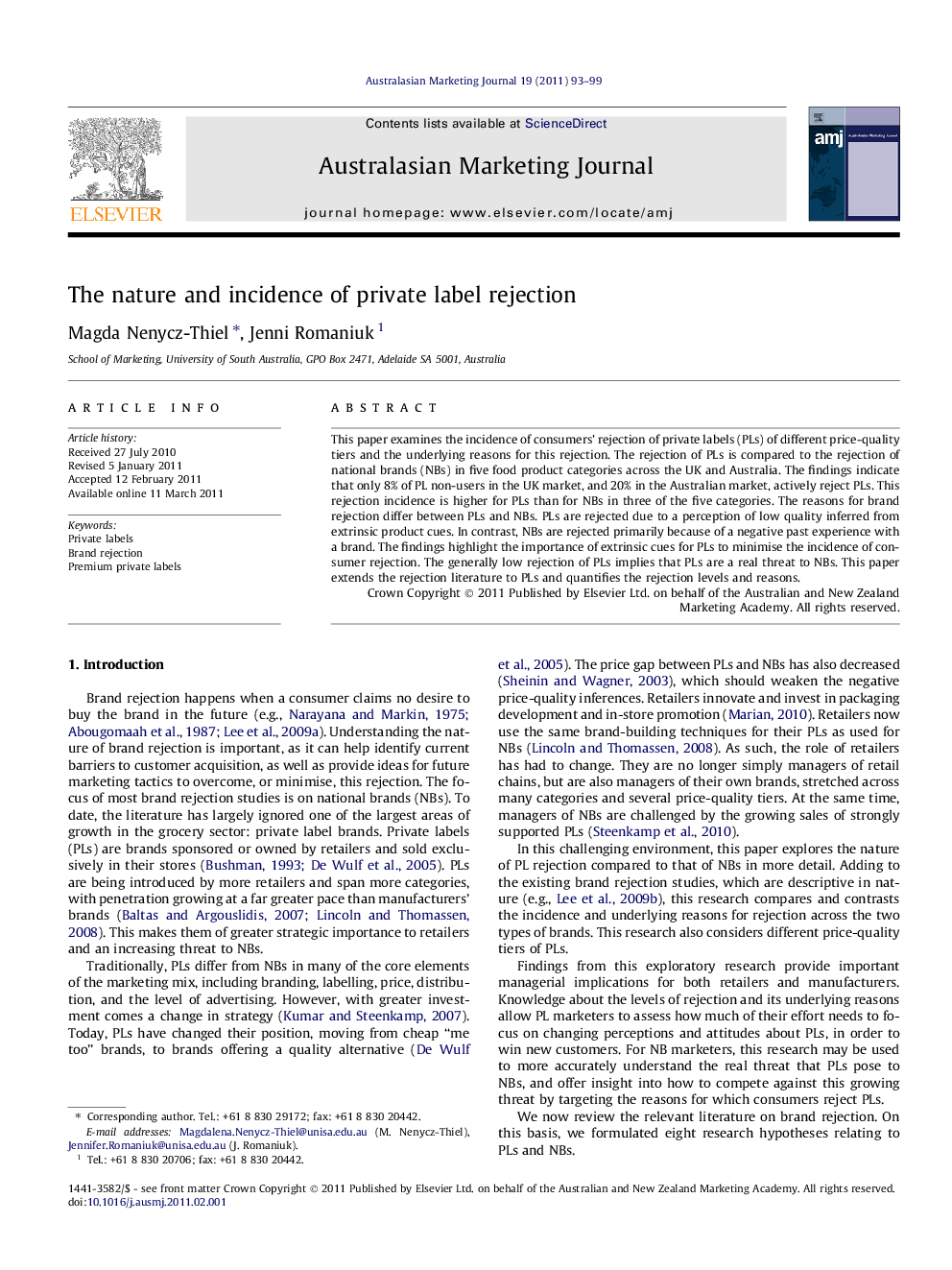| Article ID | Journal | Published Year | Pages | File Type |
|---|---|---|---|---|
| 1027217 | Australasian Marketing Journal (AMJ) | 2011 | 7 Pages |
This paper examines the incidence of consumers’ rejection of private labels (PLs) of different price-quality tiers and the underlying reasons for this rejection. The rejection of PLs is compared to the rejection of national brands (NBs) in five food product categories across the UK and Australia. The findings indicate that only 8% of PL non-users in the UK market, and 20% in the Australian market, actively reject PLs. This rejection incidence is higher for PLs than for NBs in three of the five categories. The reasons for brand rejection differ between PLs and NBs. PLs are rejected due to a perception of low quality inferred from extrinsic product cues. In contrast, NBs are rejected primarily because of a negative past experience with a brand. The findings highlight the importance of extrinsic cues for PLs to minimise the incidence of consumer rejection. The generally low rejection of PLs implies that PLs are a real threat to NBs. This paper extends the rejection literature to PLs and quantifies the rejection levels and reasons.
► We examine the incidence of rejection of private labels and the reasons for rejection. ► Rejection of private labels is generally higher than that of national brands. ► Rejection of premium private labels is lower than rejection of value private labels. ► Rejection of private labels is mainly due to low perceived quality. ► For national brands, rejection is mainly due to negative experience with a brand.
